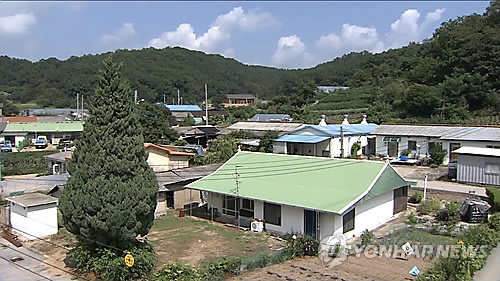Living in small towns more stressful than cities: study
By Claire LeePublished : July 11, 2016 - 16:46
South Koreans who live in small towns are more stressed and have a higher prevalence rate of illnesses than those living in cities, a study showed Monday.
The study, organized and released by the Korea Institute for Health and Social Affairs, analyzed the national health insurance data of some 197,000 Koreans.

The study also found that individuals who live in smaller towns have a higher stress level than those living in big cities.
Koreans who live in towns that have a population of 100,000 or less on average rated their stress level 2.97 out of four, while those who live in cities that have a population of 500,000 or more rated 2.84 out of five.
In all regions, those in their 30s had the highest stress level.
While those who live in cities experienced a lower amount of stress as they aged, citizens in remote regions experienced a higher level of stress as they aged, especially after entering their 60s.
A similar pattern was noticed in the prevalence rate of illnesses and other health conditions.
Among those who live in towns with a population of 100,000 or less, 0.88 percent of them have suffered one of 10 major health conditions, including high blood pressure, depression, hyperlipidemia, myocardial infraction and angina pectoris.
Yet the proportion of residents living in cities with a population of 500,000 or more who have experienced one of the 10 illnesses was significantly low at 0.57 percent.
Those living in small towns also weighed more than those living in big cities, which suggests that obesity may be more prevalent in regions with low population density. The average body mass index rate for those living in towns with a population of 100,000 or less was 23.03, higher than Koreans living in cities with a population of 500,000 or more, which saw an average BMI rate of 22.83. One’s weight is considered normal if his or her BMI rate ranges from 18.5 to 24.9.
The study suggested that one of the biggest reasons behind the statistics may have to do with a larger proportion of elderly individuals in small towns, who are more prone to sickness and social isolation.
“The government should take these statistics and regional differences into account when coming up with policies,” the report wrote.
By Claire Lee (dyc@heraldcorp.com)
The study, organized and released by the Korea Institute for Health and Social Affairs, analyzed the national health insurance data of some 197,000 Koreans.

The study also found that individuals who live in smaller towns have a higher stress level than those living in big cities.
Koreans who live in towns that have a population of 100,000 or less on average rated their stress level 2.97 out of four, while those who live in cities that have a population of 500,000 or more rated 2.84 out of five.
In all regions, those in their 30s had the highest stress level.
While those who live in cities experienced a lower amount of stress as they aged, citizens in remote regions experienced a higher level of stress as they aged, especially after entering their 60s.
A similar pattern was noticed in the prevalence rate of illnesses and other health conditions.
Among those who live in towns with a population of 100,000 or less, 0.88 percent of them have suffered one of 10 major health conditions, including high blood pressure, depression, hyperlipidemia, myocardial infraction and angina pectoris.
Yet the proportion of residents living in cities with a population of 500,000 or more who have experienced one of the 10 illnesses was significantly low at 0.57 percent.
Those living in small towns also weighed more than those living in big cities, which suggests that obesity may be more prevalent in regions with low population density. The average body mass index rate for those living in towns with a population of 100,000 or less was 23.03, higher than Koreans living in cities with a population of 500,000 or more, which saw an average BMI rate of 22.83. One’s weight is considered normal if his or her BMI rate ranges from 18.5 to 24.9.
The study suggested that one of the biggest reasons behind the statistics may have to do with a larger proportion of elderly individuals in small towns, who are more prone to sickness and social isolation.
“The government should take these statistics and regional differences into account when coming up with policies,” the report wrote.
By Claire Lee (dyc@heraldcorp.com)









![[Hello India] Hyundai Motor vows to boost 'clean mobility' in India](http://res.heraldm.com/phpwas/restmb_idxmake.php?idx=644&simg=/content/image/2024/04/25/20240425050672_0.jpg&u=)








